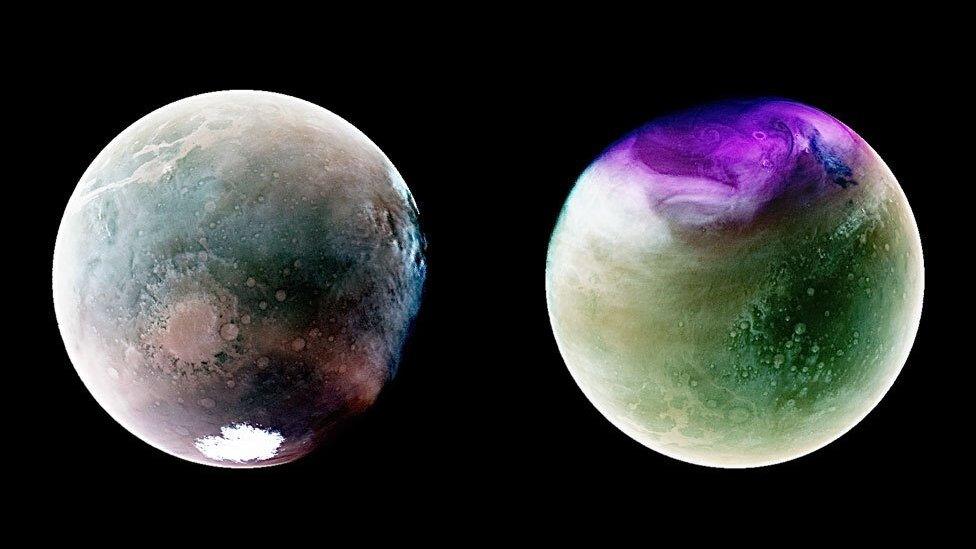Space photography: Incredible images show Mars as never before
- Published
- comments

The Maven spacecraft has stunned people with ultraviolet views of Mars
Scientists have shared amazing ultraviolet images of Mars showing it in a whole new light.
Nasa's Maven mission acquired stunning views of the planet taken at different points as it orbited around the Sun.
By viewing the planet in ultraviolet wavelengths, the team was able to gain better insight into the Martian atmosphere and view its surface in remarkable ways.
Maven stands for Mars Atmosphere and Volatile Evolution, and was launched in November 2013.
It entered Mars' orbit in September 2014.
The mission's goal is to explore the planet's upper atmosphere to see how it interacts with the Sun and solar wind, to explore the loss of its atmosphere to space.
Scientist hope this well help them better understand the history of Mars' atmosphere, climate and liquid water, to see whether it is somewhere humans could safely live in the future.
The first image was taken in July 2022 during the southern hemisphere's summer season, when Mars passes closest to the Sun.
The photo shows Argyre Basin, one of Mars' deepest craters at the bottom left. The crater is filled with atmospheric haze, shown in a pale pink colour.
View of Mars' southern hemisphere
The deep canyons of Valles Marineris can be seen in the top left. They are filled with clouds, which appear to be a tan colour in this image.
Also visible in white is the southern polar ice cap at the bottom that can be seen shrinking due to the relative warmth in summer.
Dust storms drive water vapour to very high altitudes during the summer warming.
This helps to explain Maven's discovery of enhanced hydrogen loss from Mars in the summer.
The second image is of Mars' northern hemisphere and was taken in January 2023 after Mars had passed the farthest point in its orbit from the Sun.
This picture shows many white clouds, and the deep canyons of Valles Marineris appear to be a tan colour in the lower left. You can also see a lot of craters.
View of Mars' northern hemisphere
How did Nasa manage to take the images?
The specialist instruments Nasa uses can measure wavelengths, but they are outside of the normal spectrum humans are able to see.
To make these wavelengths visible to the human eye, and therefore easier to interpret, the images are manipulated or adjusted.
The wavelengths are rendered with varying brightness levels of three ultraviolet wavelengths represented as red, green, and blue.
In this colour scheme, atmospheric ozone appears to be purple, while clouds and hazes appear as white or blue.
The surface can appear tan or green, depending on how the images have been optimized to increase contrast and show detail.
- Published27 April 2023
